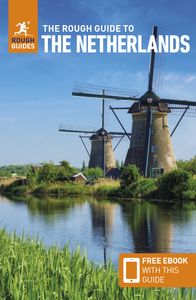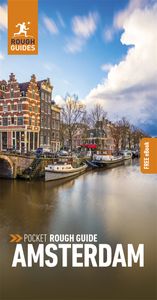A beach without the crowds
If the crowded seaside antics of Scheveningen don’t appeal, then head about 3km south to the Zuiderstrand, a long, sandy beach that is often deserted. Even at peak times, there’s oodles of space – and you can watch the ships pulling through the waters of the North Sea. To get there, take tram #12 from The Hague HS train station to its Duindorp terminus and it’s a 5-minute walk through the dunes of the Westduinpark to the beach.
The Mauritshuis Masterpieces
More than one hundred paintings from the permanent collection of the Mauritshuis, located in the centre of The Hague. Expect to see the fine canvas by Hans Holbein the Younger (1497–1543): a striking Portrait of Robert Cheseman, where all the materials – the fur collar, the falcon’s feathers, and the cape – seem to take on the appropriate texture. Of Peter Paul Rubens (1577–1640), the acclaimed painter and diplomat, Old Woman and a Boy with Candles, is an intriguing canvas with dappled, evocative shades and light.
Another of his highlights is The Garden of Eden with the Fall of Man, a collaboration between himself and Jan Brueghel the Elder (1568–1625). Rubens painted the figures and Brueghel the landscape and animals, from monkeys to deer and lions coexisting peacefully. The Mauritshuis owns no fewer than twelve paintings by Rembrandt (1606–69). Pride of place among them goes to the Anatomy Lesson of Dr Tulp, the artist’s first commission in Amsterdam, dating from 1632. The peering pose of the students who lean over the corpse solved the problem of emphasis falling on the body rather than the subjects of the portrait, who were members of the surgeons’ guild. Hopefully, Tulp’s skills as an anatomist were better than his medical advice, which included the recommendation that his patients drink fifty cups of tea a day.
Johannes Vermeer's (1632-75) most famous work, Girl with the Pearl Earring, graces the exhibition with its enigmatic beauty. This famous painting testifies to Vermeer's extraordinary skill in conveying subtleties of light and expression.
Displayed alongside it is his equally superb but compelling View of Delft, a canvas that deceives at first sight. A deceptive canvas: the fine lines of the city are pictured beneath a cloudy sky, a patchwork of varying light and shade, but all is not quite what it seems. The painting may look like the epitome of realism, but in fact, Vermeer doctored what he saw to fit in with the needs of his canvas, straightening here, lengthening there, to emphasize the horizontal. Interestingly, the detached vision implicit in the painting has prompted some experts – like Wilenski – to suggest that Vermeer viewed his subject through a fixed reducing lens or maybe even a mirror.






















